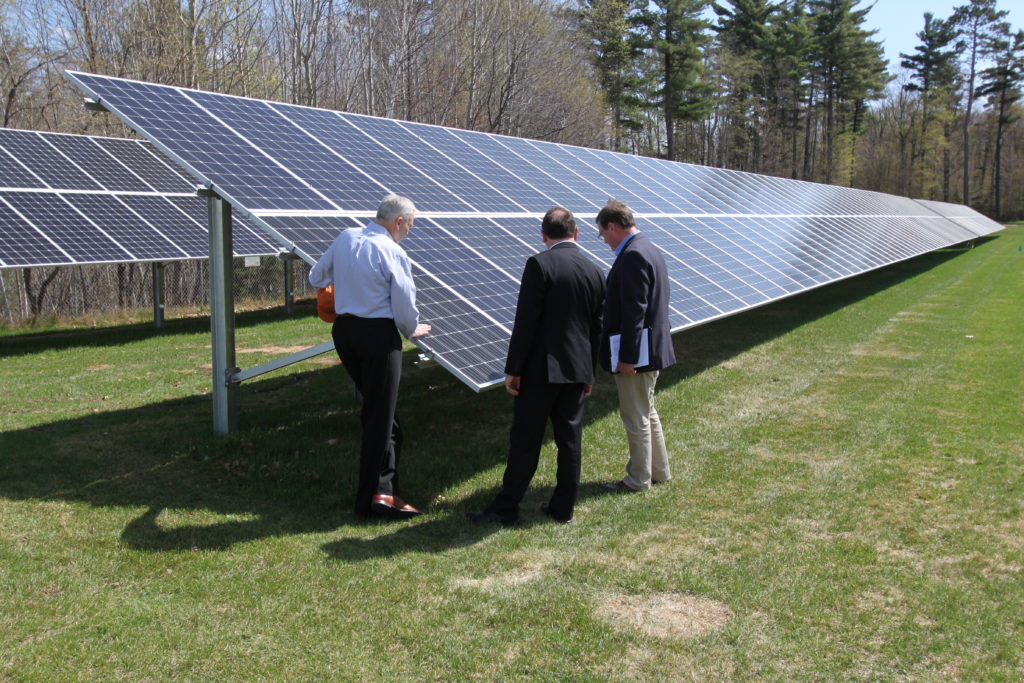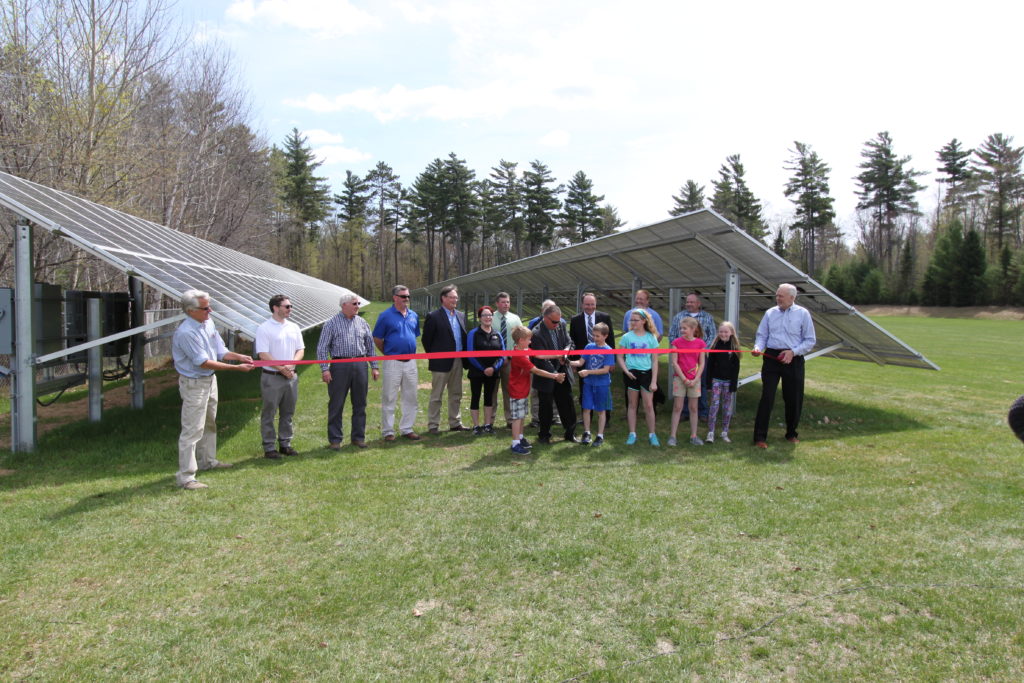Climate change is everyone’s crisis, and how we build and manage our buildings can help create a piece of the solution. The American Institute of Architects (AIA) has called on architects around the world to support humanity’s collective call to climate action through an unrelenting commitment to sustainable and resilient design. One of the ways we can do that is to aim for Zero Net Energy (ZNE) school buildings. In a ZNE building, the total amount of energy used by the structure annually is equal to the amount of renewable energy created on the site.
For most communities, the school system is a cornerstone for the area. By their nature, senior leaders within school districts are often seen as thought leaders, guiding the way towards a brighter future. Educational leaders, along with architects, engineers, designers, and builders can, and should, direct the discussion on important issues like climate change, sustainability, resilience, alternative energy, and others. Then, we should act.
By their nature, senior leaders within school districts are often seen as thought leaders, guiding the way towards a brighter future.
In the United States, nearly 40 percent of greenhouse gases can be attributed to carbon produced by buildings during construction and everyday heating, cooling, and lighting. Rising sea levels, extreme weather events, and the degradation of natural resources are a direct result of increased carbon levels and other greenhouse gases, which threaten national security and global economies. They disrupt the balance of ecosystems and undermine public health. They threaten to transform our planet irreparably and compromise our future. But solar and battery energy storage technologies have evolved in the last 10 years to a point where they are now very viable options for school systems to capitalize upon for the benefit of our planet, our students’ careers, and our financial bottom line.
Is the technology available?
Two significant trends that are becoming more mainstream for schools are on-site solar PV (photovoltaic) systems and, just recently, on-site battery storage. Solar photovoltaic cells produce electricity by absorbing sunlight and using that light energy to generate an electrical current. Batteries can be charged from excess solar production when more solar power is produced than is needed by the school. This stored power can then be used later, especially during higher cost on-peak power periods. Batteries can also be charged from the electrical grid during off-peak periods.
Integrating energy storage with solar PV adds flexibility to a building’s energy management system, delivering peak demand reductions and cost savings. With the addition of micro-grids, battery storage can also be used for emergency power during outages on the electrical grid.

Demand management strategies aim to reduce peak demand charges. As utility providers introduce smart grids to provide a price signal in real time from the power grid, automated adjustments can control the operation of the building’s equipment.
For example, when power costs are elevated, such as at peak demand times, some equipment and lighting can be limited or turned off. Enhancements like that require additional programming of HVAC (heating, ventilation, and air conditioning) and lighting controls, as well as deliberate training and ongoing communication with facilities’ staff, teachers, and students. If a school’s electrical use can be controlled to diminish the demand (kW) peaks, it might use the same quantity of electricity over the course of a year while reducing the electricity bill by 10% or more. This complements both energy and demand savings from solar PV.
The goal is to move towards Zero Net Energy, but every step along the way can provide financial savings.
Does solar energy make sense financially?
On-site, solar PV and battery systems should be considered with every new construction or remodeling project. It should also be contemplated as a stand-alone option for existing schools. The economic benefits of on-site solar PV include low maintenance and operation costs and a competitive guaranteed rate cost for your future electricity. The savings allow school district administrators to focus more funding on education rather than paying energy bills.
Solar has flexibility advantages in both new and existing schools, with rooftop, ground-mount, and car port mounting serving as viable options.
An emerging trend that is accelerating solar and battery adoption is the availability of third-party investors. Such investors leverage federal tax credits to make solar more affordable for schools. In most states, third-party involvement makes solar investments feasible with minimal or no up-front or first-cost financial outlay and are immediately cash flow positive.
Can solar energy be used as an educational tool?
Solar PV and battery storage systems connected to the internet provide a real-time, interactive educational platform for students that supports STEM (science, technology, engineering, and math). They can also serve as a catalyst for discussions in sociology, civics, finance, and political science.
Throughout much of the country, renewable energy jobs are rapidly rising. Exposing students to these emerging systems opens their minds to new opportunities and gives them a leg up in their career track when the curriculum provides for it. With initiatives like the AIA Climate Action plan and the Biden-Harris administration’s goal of a zero-carbon economy by 2050, that puts our students in a prime position to develop and implement the technologies to achieve these goals. Introducing students to the basics of these concepts and the technologies already available through a hands-on learning approach, and coupled with a strong environmental curriculum, is a great way to challenge their minds, create interest, and prepare them for their future.
Are schools using solar and seeing the benefits?
Northland Pines School District’s (NPSD) high school in Eagle River, Wisconsin, was the first LEED Gold certified public high school in the country. The 250,000-square foot facility—now transitioned to a Middle & High School (NPMS/HS)—was state-of-the-art at the time of its completion in 2006, integrating intelligent building features and monitoring to fine-tune for peak comfort, health, and cost savings. Clever examples include sensors to lower electric lighting when daylight is sufficient, automatic shut-off lighting when no one is using a particular space, and adjusting heating, cooling, and ventilation to non-occupied settings when no one is present.

The 2017 addition of third-party financed solar energy at the NPMS/HS and Eagle River Elementary, has enhanced the energy savings in the District. A transition to LED lighting and further demand management measures were completed at the same time. Land O’ Lakes Elementary participates in a We Energies solar program that leases land from the school. A solar and battery system is now being planned for St. Germain Elementary.
The solar PV energy systems were installed on the fieldhouse roof of the Middle & High School and on the ground behind Eagle River and Land O’ Lakes Elementary Schools. The energy management systems have been upgraded and performance is being tracked. The projects are supported by Wisconsin’s Focus on Energy program grants as well as green-minded, third-party investors. The NPSD efforts integrate efficiency and demand management with solar production to reduce overall energy costs. The solar additions required no cost up-front and were cash flow positive in the first year and onwards. As the solar and battery markets continue to mature and as utility regulations keep pace, future financially advantageous investments in batteries and additional solar will enable these schools to potentially realize zero net energy.
What will school design, remodeling, and construction look like in 2030?
Future school design, remodeling, and construction will look the same as it does now unless leaders in education, building construction, student organizations, and our community take the necessary steps to implement new technologies like solar energy production and battery storage that are available today and that will make a difference tomorrow. For those that have already made these strides, it is about helping others understand the benefits and make the changes as well.

